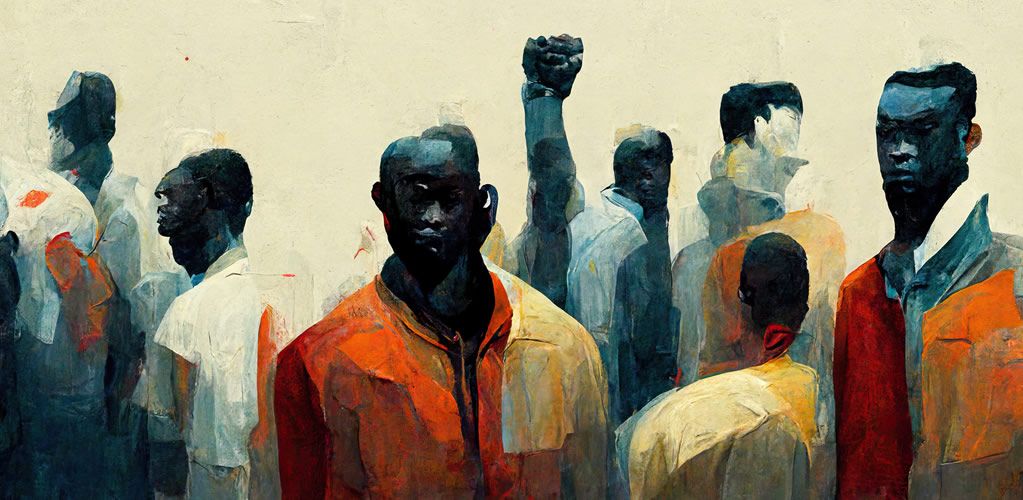A glimpse of racial bias progress within America’s news media
Despite progress, the news media in America still has a long way to go in terms of true racial bias progress. Black voices are often ignored or drowned out by mainstream outlets, and real representation is yet to be achieved.

Despite progress, the news media in America still has a long way to go in terms of true racial bias progress. Black voices are often ignored or drowned out by mainstream outlets, and real representation is yet to be achieved.
R acial bias in the way American Blacks are portrayed on and in TV and print mainstream news media is not a new phenomenon in America. But the attentive, proactive, and positive way American TV and print mainstream news media have reported on an American Black story in the last two weeks, is a first and very new phenomenon that hopefully will become commonplace.
The late American Black PBS anchor Gwen Ifill coined the phrase, “Missing White Woman Syndrome”, to describe the mainstream media’s racial bias practice of covering missing or endangered American White women while almost ignoring missing or endangered American people of color. To determine how bad the racial bias is, the Columbia Journalism Review (CJR) sampled 3,600 articles from American TV, radio, newspaper, and online news organizations about missing people that appeared last year, between January and November of 2021. CJR then matched its data with age, gender, and race data tracked by the National Missing and Unidentified Persons System (NamUs).
What CJR’s research found was “if you’re young, white, female, and a resident of a big city, the coverage you’d receive if you went missing is vastly out of proportion” than the coverage a person of color would receive. CJR data revealed an American White young adult woman who is reported missing in New York could be covered in 67 news stories, but an American Latino male of the same age would appear in only 17. A middle-aged American Black man would be expected to receive four or fewer mentions in the press. An American Black man who went missing in St. Louis would only garner 12 news stories, while a young American White woman from the same town would attract ten times the media coverage.
To dramatize how prevalent racial bias is in covering missing or endangered American people of color compared to the coverage of American Whites, the CJR developed a tool called “Are You Press Worthy?”, it allows anyone to test their own newsworthiness to the media, should they go missing, by entering basic demographic data into the tool. Explaining why eliminating racial bias in reporting about American people of color either missing or endangered, Kyle Pope, the editor, and publisher of the CJR said:
Racial bias in reporting on missing or endangered people of color is not limited to the American news media. Ngozi Fulani, the chief executive of Britain’s Sistah Space says:
By asking four questions: age, gender, state or city residence, and race or ethnicity the How Much Press Are You Worth missing person calculator can determine how much media attention a person would receive if they were missing
Fulani cited an example:
According to the Black and Missing Foundation, 38% of people who go missing in the U.S. are Black, which is double the U.S. American Black population of 14%. Co-founder Natalie Wilson says:
In that regard, a bright flash of light has appeared at the end of the American news media’s racial bias tunnel.
Two weeks ago, four Americans Eric James Williams, Latavia McGee, Shaeed Woodard, and Zindell Brown crossed the U.S. border from Brownsville, Texas, to the border city of Matamoros, Mexico where McGee planned to undergo a tummy tuck cosmetic procedure. Shortly after the white minivan, they were traveling in crossed the border into Mexico, it was purposely hit by another vehicle and attacked by multiple rounds of gunfire; armed men in black with protective vests and rifles then kidnapped them by forcing them from the minivan and dragging them into a white pickup truck. What happened next illustrates how life-saving miracles can occur when the American media operates free of racial bias.
What happened next never happens when American Blacks are missing or endangered victims. What happened next was that America’s mainstream news media kicked in with minute-by-minute, hour-by-hour, and day-by-day 24/7 extensive and informative coverage on the plight of FOUR AMERICAN BLACKS, as if they were, dare I say it, four blond hair blue-eyed Natalee Ann Holloway missing white women! There were no dog-whistle racial bias undertones of maybe the four did something wrong to provoke this, nor any negative questioning of what the four were doing in Mexico, among the news media’s coverage. It was just a 24/7 barrage of straight hey America four fellow Americans are in danger, action must be immediately taken to save their life, among the news media coverage.
The news media’s racially bias-free coverage of the 4 American Blacks was so immediate, so extensive, and so continuous that it proved the most important point that CJR and the Black and Missing Foundation make, which is the amount of media coverage a missing or endangered case gets immediately after going missing, has a direct result on what happens to their life. In the case of the four American Blacks, the immediate intense coverage of their plight saved the two lives that were not killed in the initial shooting to kidnap the four, had the coverage not occurred the other two would have certainly been killed even after the drug cartel criminals discovered they had kidnapped the wrong people, in a self-serving attempt to cover up their murderous fiasco.
Instead, the racially bias-free media coverage was so immediate, so intense, and so strictly limited to the message that Americans have been shot, held somewhere against their will, and there must be consequences and action taken, that it created another historical first, shaming the Mexican shameless. The drug cartel criminals, who would kill their own mothers at the drop of a hat, were so intimidated by the immediate intense media coverage that they dared not to kill the two surviving Americans, and for the first time issued a public apology for doing to the four Americans, what they proudly and boldly do to others every day of the week.
But the bright flash of light at the end of the news media’s racial bias tunnel is not the reporting of this story, nor is it the two lives thankfully saved by the reporting of this story. The bright flash of light is that the intense reporting of this story happened without a single word, a single press conference, or a single protest demonstration by Al Sharpton, the NAACP, or the Black and Missing Foundation over the news media’s lack of attention to these four missing and endangered American Blacks. Their 24/7 barrage-worthy story evolved naturally even though 52% of American journalists have admitted that American newsrooms lack enough racial and ethnic diversity. But this instance of a naturally evolved story free of racial bias, in no way, means that the current demands and attempts to diversify America’s newsrooms should end. Because the future survival of American democracy depends on America’s newsrooms racially diversifying.
However, this story free of racial bias, which naturally evolved among the current white racially dominated newsrooms of America, does indicate progress towards reaching the ultimate goal that true racially diverse newsrooms will achieve; creating newsrooms in America that are staffed by red, yellow, black, and white Americans who report news based on the character and content of the news story’s facts, and not based on the race of the people the news story is about. Thereby enabling American society to take many, many steps toward creating the racially bias-free “Beloved Community” of Martin Luther King Jr.’s Great Dream.

— AUTHOR —

|
▫ Isaac Newton Farris Jr., Nephew of Martin Luther King Jr, he serves as Senior Fellow at King Center. Growing up in one of the most socially & politically active families has given him a unique perspective on current events. |

|

|

|
Sources
▪ Text: This piece was originally published in Isaac Newton Farris Jr’s blog and re-published in PMP Magazine on 21 March 2023, with the author’s consent. | The author writes in a personal capacity.
▪ Cover: Adobe Stock/rick.





[Read our Comments Guidelines]